Cate Blanchett: Anybody, anywhere, all at once | Panorama
This wasn’t the Oscar year for Cate Blanchett – even though most cinephile oracles and even the stars themselves foretold her as the winner – for how she breathed and levitated in the role of Lydia Tàr. Blanchett deserves to be celebrated anytime, especially now, after she announced that she would slowly retire from the industry.
For such an effervescent grandiose career, Blanchett seems difficult, if not impossible to decipher. She is Galadriel in The Lord of the Ring, she is Katharine Hepburn in The Aviator, the anxious aporophobic in Blue Jasmine; and last but not least, she is multiplied 13 times over in a film in which she didactically and playfully recites a series of manifestos of all kinds, which remind us of the fact that art is composed of anathemas and mutual elbowing), I would have maybe said that she only shines in classical roles, where she can make use of her grace, be it outright (Carol), auratic (Lord of the Rings), or innocent (The Aviator), but I cannot decide if they’re indeed better than the strange, anti-system ones (there is also grace in the way that she clumsily caricatures pe Marina Abramovic, and in the role of the superficial television anchor in Don’t Look Up).

What is certain is that she is most valuable when she either constructs an abstraction (the role of the teacher in Manifesto, for example, is an experimental treasure), or she transforms into someone that is completely atypical for her usual roles (Phyllis Schlafly from Mrs. America is an anti-feminist that dedicated her entire life to boycotting equality laws in the USA; where Phyllis was a real person, Blanchett doesn’t try to create a one-to-one recreation of her, but rather to offer her some nuance, without necessarily rendering the character sympathetic).
Hollywood is chock full of demonstrations of sheer force in welding method acting and physical transformation, from increasingly believable prosthetics to actors obsessively keen on performing their own stunts, of placing themselves in danger, of exposing their wounds. What Blanchett does is not necessarily something that belongs to this category, I believe, but rather, it’s a play, a wager that she places with herself – how far can I go away from myself and still somehow remain the same?
the history of a purse and other such artifices
Many of her roles rely on linguistic artifice – they are spectacular because she can imitate any accent, and they are powerful literally because of Blanchett’s voice. It’s worth pointing out that she, maybe more than any actor since Morgan Freeman, has an entire oeuvre as a voice-over actor. Her most recent interpretation is Sazzatura’s voice in del Toro’s Pinocchio, a true wonder made up of onomatopeia, with no lines, just smirks and groans; amongst others, she is the voice of the mysterious masked woman in Eyes Wide Shut.
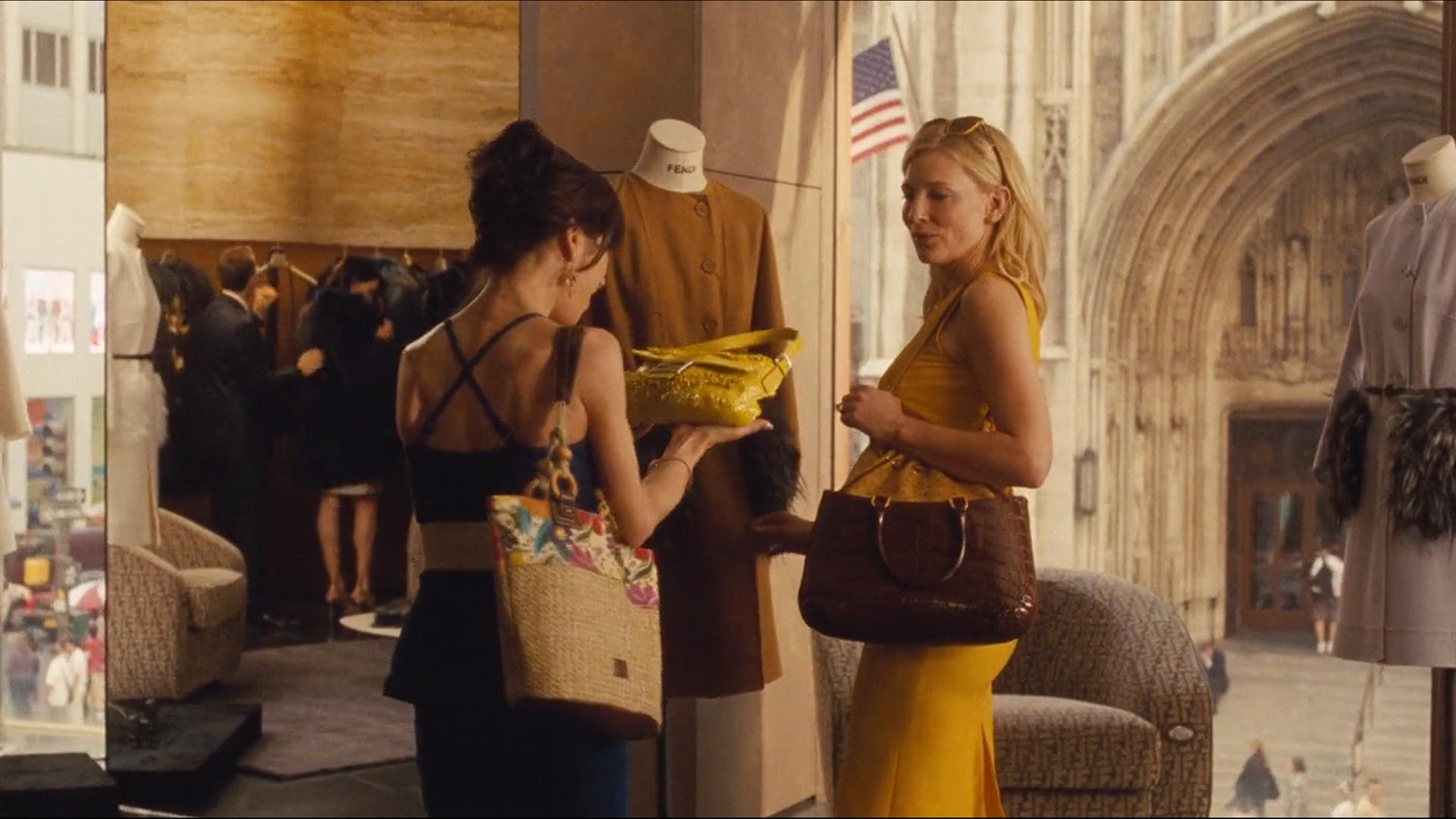
However, the Australian actress is truly attached to props, to certain elements of set design which she utilizes to create an entire composition. And the first thing that comes to mind is Blue Jasmine, where she performs a woman who is fully incompatible with the notion of modesty, of poverty; after a life of opulence, she is downgraded and forced to live in a hovel cramped with kitschy objects, old furniture, and mold, together with her step-sister and her two kids. For Jasmine, wealth is a sort of phantom limb (an acute pain that the patient feels after the body part has been removed); even the film is bathed in an oxidized, sickly tone of yellow, akin to gold. And there’s another thing: her dependence on all sorts of fetishized objects – her Louis Vuitton suitcase, first of all, then her Hermes purse, her Chanel pearls; she arrives sweating, desperate, claiming that she is broke, then mentions that she flew in first class. Not only is she genuinely terrified of the idea of giving up the relics of her past life, but she, herself, also lives exclusively within the realm of imagination. All along the film, the Chanel costume that Jasmine wears several times, including the opening of the film, is a minimal wardrobe that she’s holding onto with her naked teeth.
another symbolic ellipsis
Decades later, in Tàr, a red handbag is worn from the USA to Berlin, as a symbol of the unfaithfulness and transactional personality of the protagonist – tacit consent between her and the assistant while they are talking on the way to the airport and there is an emphasis two sequences earlier when an enthusiastic fan spots her. It’s a detail that foreshadows the protagonist’s behavioral pattern, which happens frequently in the film.
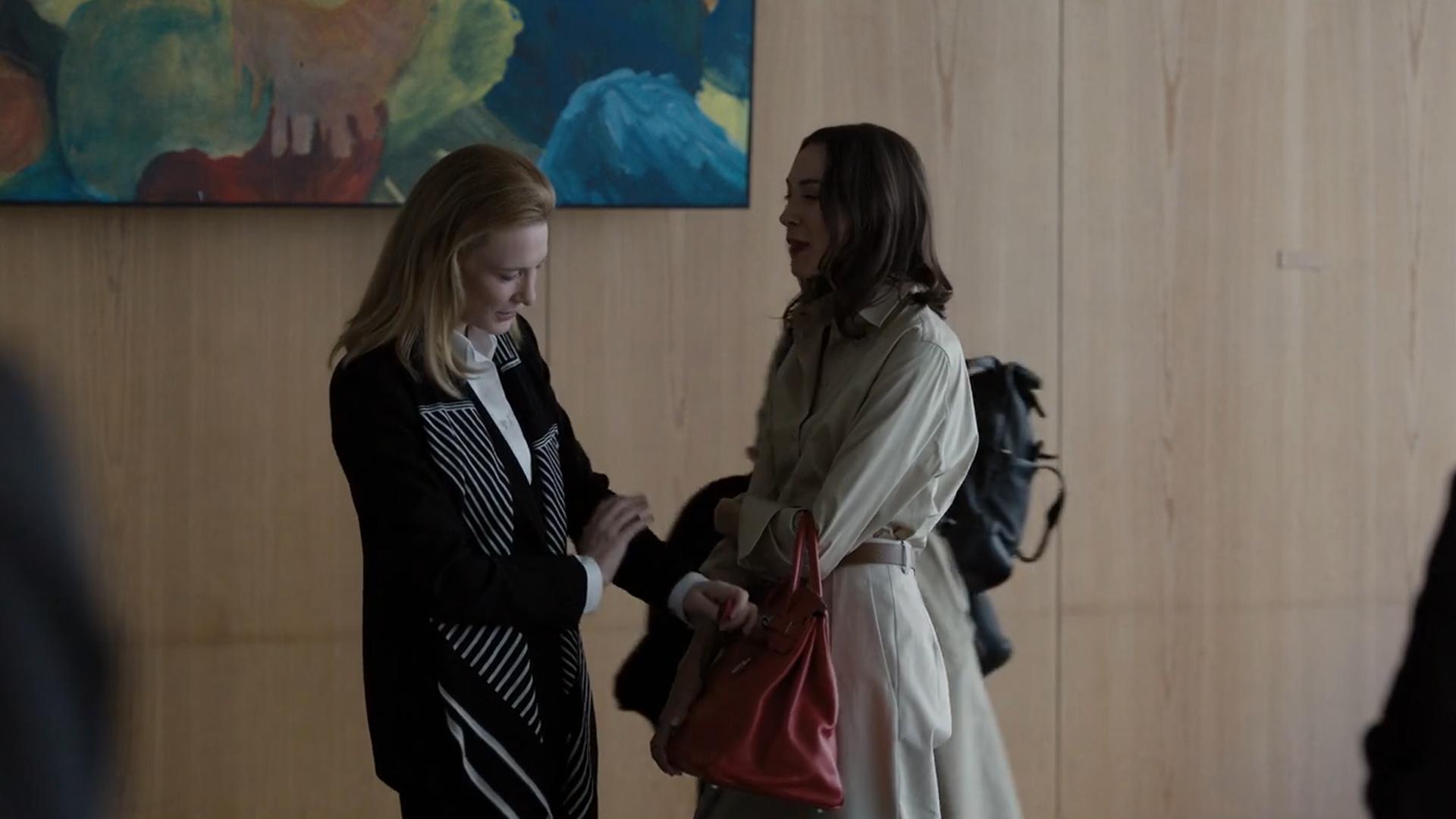
There are so many things that Tàr hides in front of the camera, only for them to burst out in the most abject of ways; however much the protagonist strives to convince us of her goodwill, all that she does is simulacra – see the pencil that she steals from her assistant, before telling him that he is fired). The red bag in Tàr doesn’t offer Blanchett the same gamut as in Jasmine, it isn’t a fictional sequel to a certain lifestyle or a reclaiming of femininity, but rather, it has the same transactional value that all the protagonist’s interactions entail, as has to do with the traces of an adulterous relationship. In Tàr, just like in Jasmine, clothing offers Blanchett a very specific dimension – of course, this is not the first time that she performs a masculine role (in I’m not there, for example, she is Bob Dylan’s crazy-haired double, under the name of Jude Quinn) – all of this also comes from Blanchett’s playful attitude towards norms (she confessed to her habit of wearing male clothes in an interview).
queerness
In contrast to I’m not there, where she performs a certain queer lightness, the queerness in Tàr is somewhat contrived – she is a woman that truly struggles to impose herself as a male kind of authority, and the fictional reins that constrict her in her day to day life derive from a sort of fear of losing control. In an interview with Adam Gopnik, she discusses how she mostly studied the movements of male conductors to construct her role – which she conceived in parallel with set designer Dina Daigeler – prewashed flax, loosely fitted, which would duly follow the movement of her hands, that would create space. Last but not least, to hide the shape of her body (during a doctor’s appointment, Tàr easily takes her shirt off, unveiling to the camera a bra top that is very tightly fit).
status quo
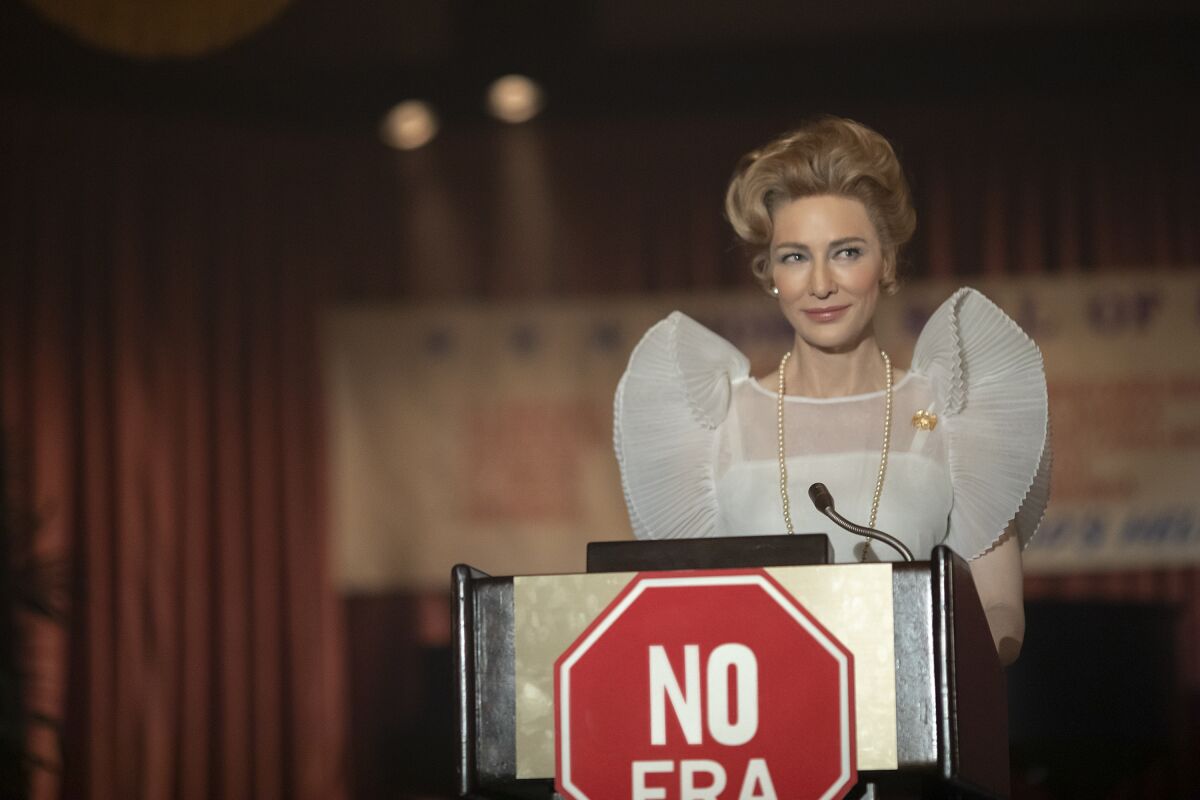
In Mrs. America, where Blanchett works with the same Daigeler, she chooses a series of candy-like housewife robes (which are strikingly similar to the ones in Stepford Wives – and it’s probably not a very implausible argument, given the ironic tone of this mini-series that, after all, ends with a reference to Jeanne Dielman…). Here, too, Blanchett wears many brooches that reinforce her status quo – either with American vultures, with the flag, or with the logo of her own anti-feminist NGO. Speaking of brooches, in Nightmare Valley, along with her perpetual black two-piece suit, Blanchett wears a pin with a heart broken in two – and she also wears a strange nail polish, an inverted red French manicure; closed as she is between the doors of her cavernous cabinet, with a half-retained, half-fake smile (just like in Mrs. America), with heavy ringlets and red lipstick, this is the typical Blanchett-ian character: somber, cold, calculating, but wearing her weaknesses on her sleeve (in this case, her sympathy towards the male protagonist).
a game (of shadows)
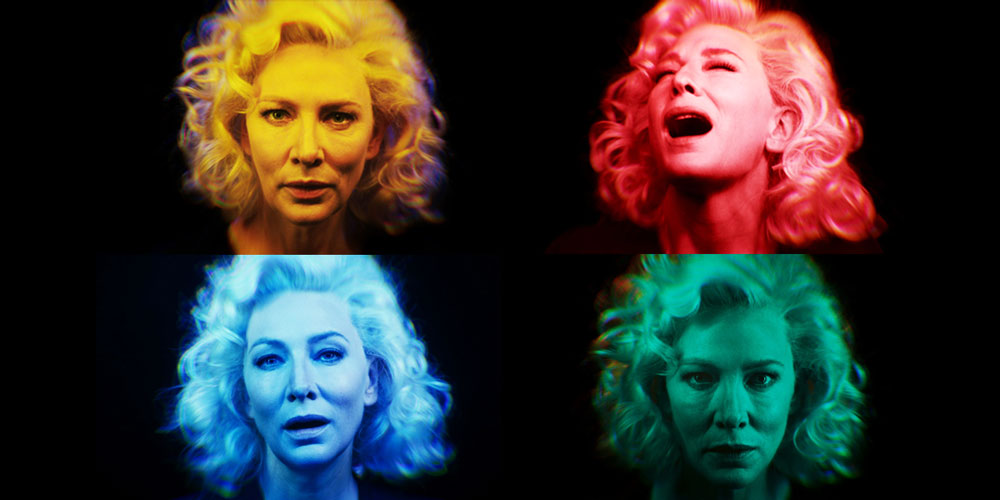
Despite Blanchett’s chameleonic character, these infinite permutations seem to function, from a certain point onward, on the principle of communicating vessels – a hook that constitutes the skeleton of other roles, and so on. In particular, her most extravagant roles are usually in non-narrative shorts, fashion films, or hyper-stylized farces – in a short film called Red (dir. Del Kathryn Barton), she is a spider-woman wearing fishnet pantyhose, strident make-up, violent as she unfolds her mating ritual; in Uncanny Valley (dir. Alex Prager), she has the double-role of an android wearing a mustard-colored trench coat that has to assassinate its double – it’s an almost non-narrative shocker in the vein of De Palma, clocking in at less than three minutes. And then there is The Four Temperaments (dir. Marco Brambilla), where she recalls Romy Schneider in Clouzot’s Inferno and where, just the same, she plays an illustration without a diegesis. Of all her eccentricities, what amused me the most was the contradiction with which she performed a witch haunted by killer pumpkins, that have been summoned by a necromancy book (The House with a Clock in its Walls).
one woman show
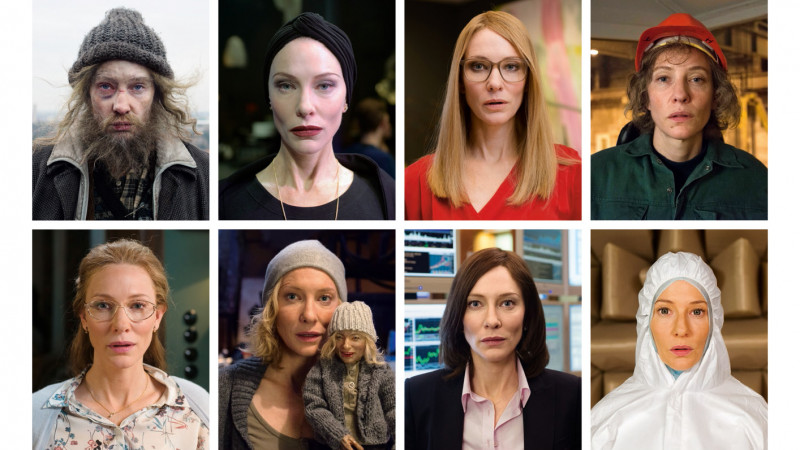
Blanchett seems to have a lot of fun with the idea of a filmic doppelganger, a leitmotif which she frequently uses since Coffee and Cigarettes (r. Jim Jarmusch) – Manifesto is a playground for a series of metamorphoses, where she takes on the successive roles of a beggar, a housewife, an industrial worker, a punk, a funeral crasher, a teacher giving a lesson in art originality, a sanitation worker; she screams, she shouts, she dances, she enters a sound-proof room, she makes dinner, she holds a speech – and Julian Rosefeldt offers a real frame to these vignettes. All around Blanchett, we see people who are living a real narration: they eat at the table, cry at the funeral, and do corporate things in their corporations; the food is real, and the tears too. The break lies in Blanchett’s interpretation, who recites a speech without affect – and the discourse doesn’t have any direct relation to the situation in which it is set. Her desires, instead, are also there, part of the background, of the mold: the teacher touches the backs of her students while subtly pointing out what they should pay attention to, checks their homework, and offers them explanations – all these cards that Hollywood cinema has assimilated as being the images of a classroom – well, Blanchett’s performances are strange, offering much more substance to these cliches rendered as images, than simply parodying them.
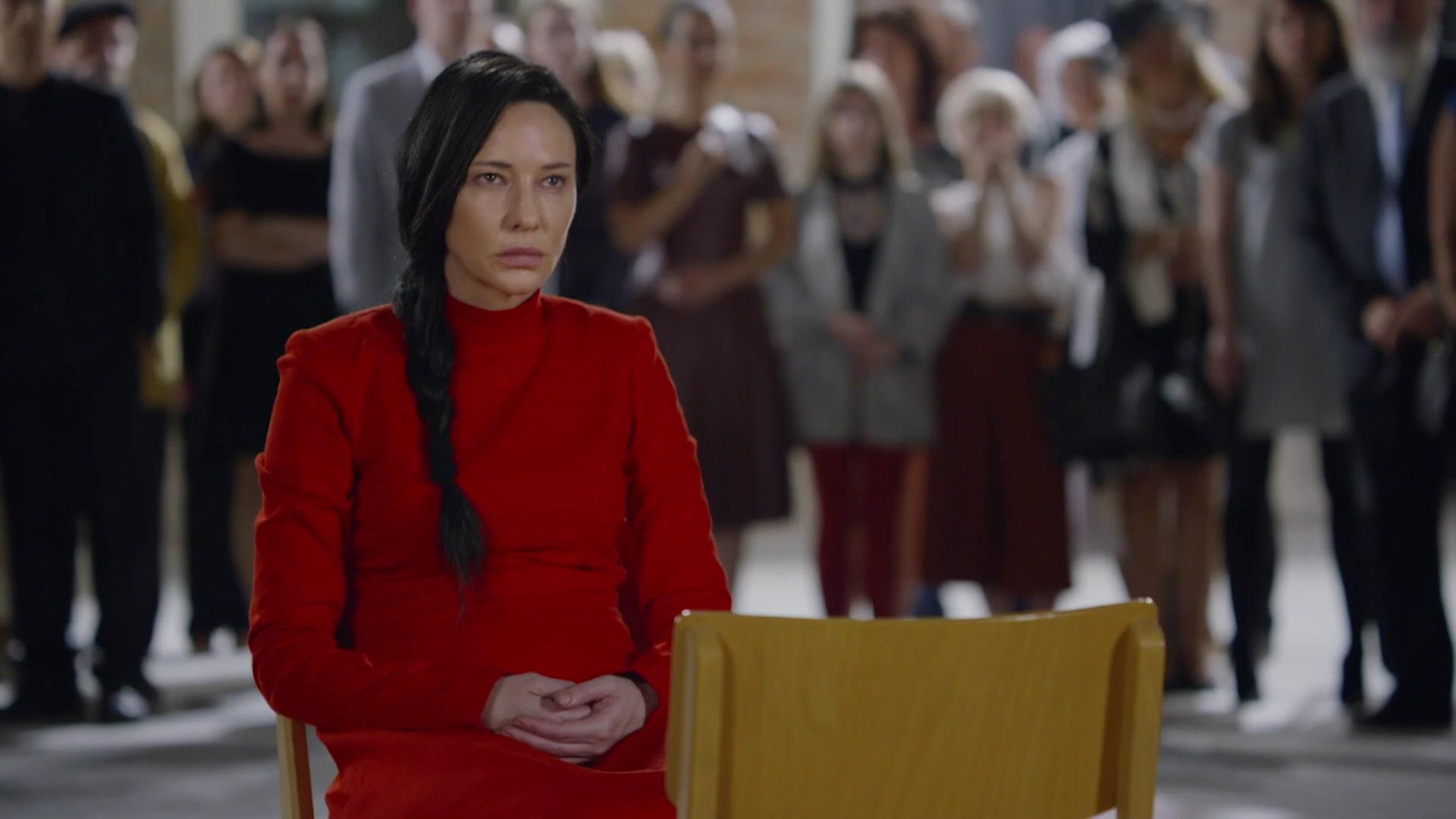
The sketches in Manifesto are a source of inspiration both for her notorious role in Don’t Look Up, as well as for the mini-episodes of Documentary Now! (a collection of irreverent fictions chock-full of classical documentary techniques, from docu-drama to reenactment). Blanchett appears in two episodes – she plays Marina Abramovic as a sort of primitive farce, then she plays a clumsy hairdresser that cuts the hair of old ladies, puts curlers, pulls their hair, flirting innocently with a photographer hanging out at the salon (in both the first and second episodes, she’s partnered with Fred Armisen, an actor notorious for his comic, farcical transformations). Having said that, Blanchett takes herself no less seriously when she’s doing comedy, even if it’s within the boundaries of a spoof – she’s flashy like Abramovic, neurotic and slightly nutty – and the real-life references, which seem whacky in this context, are more outrageous than the fictional bits (for example, Abramovic herself included a fire in a real installation, endangering those who came to see the ensemble).
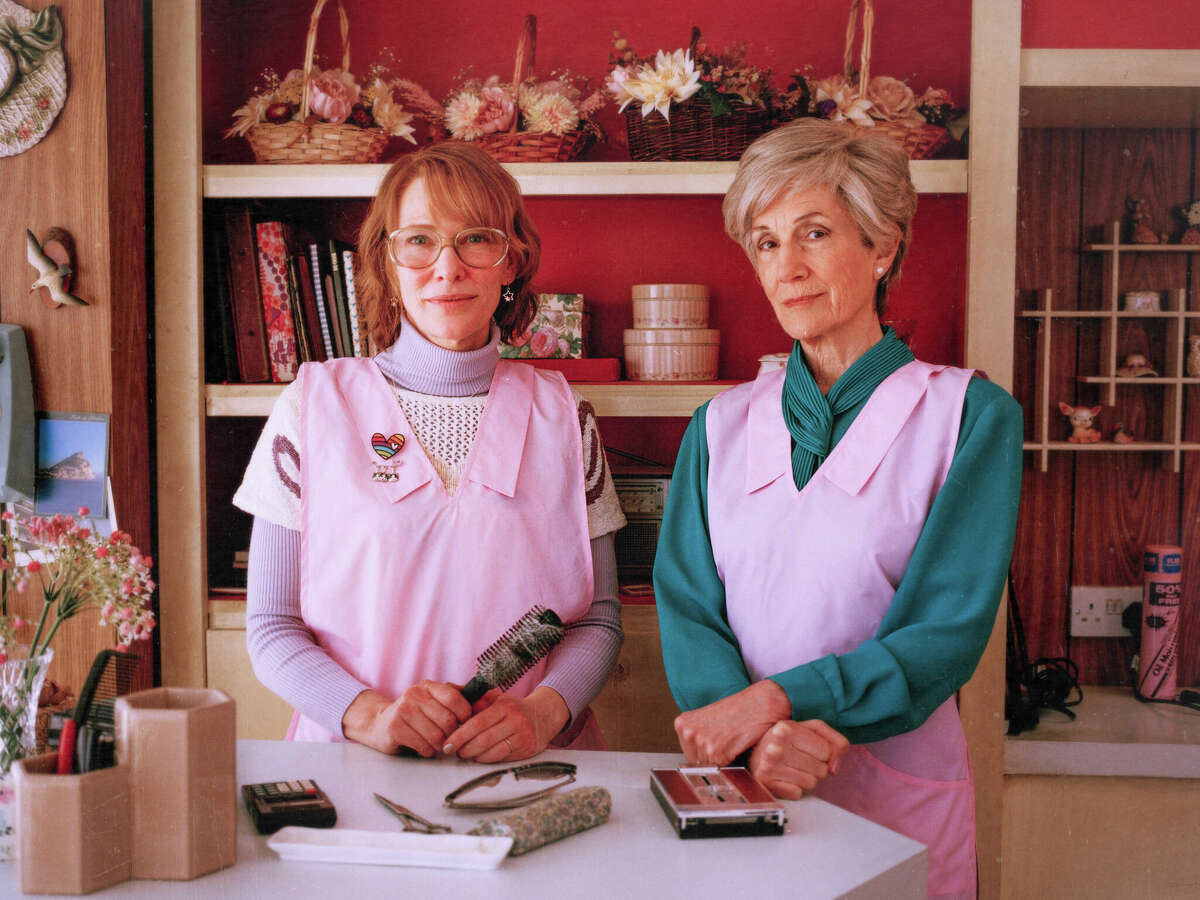
In the first segment, Blanchett is preoccupied with imitation, whereas, in the second, everything is completely made-up – she is a woman in her 40s that has fallen from the sky, wearing a pink knitted sweater, over which she puts on a transparent robe. She wears heavy prescription glasses and has an unforgettable tooth gap, her hair unwashed and slightly wavy. The first time she appears in the shot as she’s sweeping up fallen hairs – it’s probably a graceless role, by the way, and it’s fully intentional – I recognized her fabricated walk from one of her characters in Manifesto (aah!), who, before jumping on a motorcycle, is wearily walking towards it. For example, the fetishizing expressiveness of her face – taken into the most abstract of areas (first in Massive Attack’s video The Spoils, then in The Four Temperaments, then even in Rosenfeldt’s Manifesto).
I’m not sure whether Blanchett will stop performing in films, installations, shows, music videos, but one Oscar less doesn’t take anything away from her; she is probably the most vibrant feminine presence in Hollywood alongside Tilda Swinton, and will probably remain so for decades to come.
Journalist and film critic, with a master's degree in film critics. Collaborates with Scena9, Acoperișul de Sticlă, FILM and FILM Menu magazines. For Films in Frame, she brings the monthly top of films and writes the monthly editorial Panorama, published on a Thursday. In her spare time, she retires in the woods where she pictures other possible lives and flying foxes.
